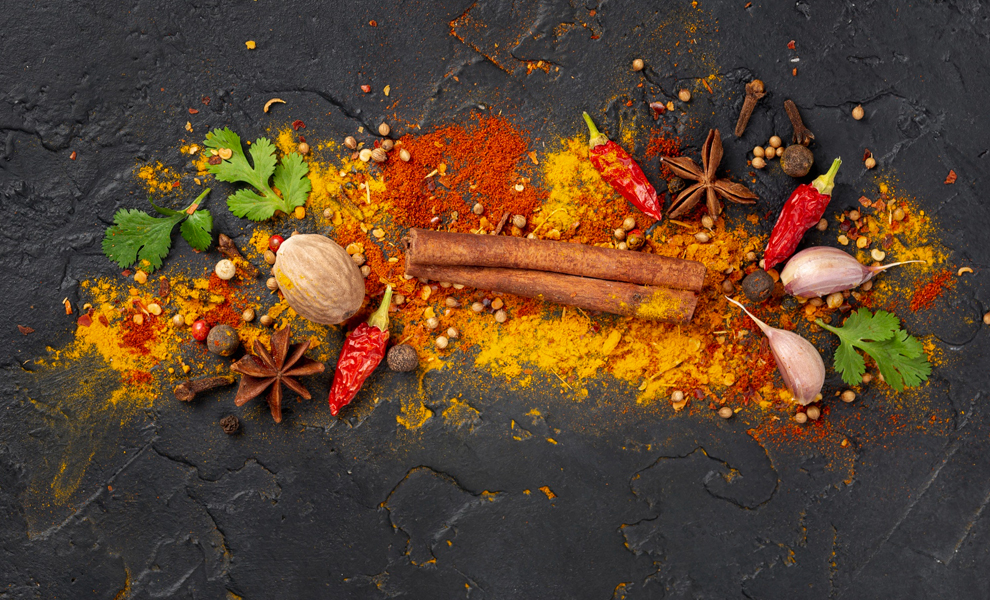
Creating Rajma Masala involves a meticulous process to blend spices and prepare a flavorful base for cooking red kidney beans, a staple in North Indian cuisine. Here’s an expanded process:
1. Selection of Ingredients:
Spices: Essential spices include whole cumin seeds, coriander seeds, turmeric powder, red chili powder for heat, garam masala for depth, and kasuri methi (dried fenugreek leaves) for aroma.
Herbs: Additional herbs like bay leaves, cinnamon sticks, and cloves may be used for added flavor complexity.
Fresh Ingredients: Onions, garlic, ginger, and tomatoes form the base of the masala paste, providing richness and texture to the dish.
2. Cleaning and Preparation:
Ensure all spices, herbs, and fresh ingredients are thoroughly cleaned and free from any impurities.
Toast whole spices such as cumin seeds and coriander seeds lightly in a dry skillet to release their oils and enhance flavor before grinding or use.
3. Grinding and Blending:
Grind the toasted spices into a fine powder using a spice grinder or mortar and pestle. This step ensures uniformity in flavor and texture, enhancing the overall quality of the masala.
4. Preparation of Masala Paste:
Heat oil in a pan and sauté finely chopped onions until they turn golden brown and caramelized.
Add minced garlic and ginger, cooking until fragrant and lightly browned.
Stir in chopped tomatoes and cook until they soften and break down, forming a thick paste.
Transfer the mixture to a blender or food processor and blend into a smooth paste. This forms the flavorful base of the Rajma Masala.
5. Cooking Process:
Heat oil in a separate pan and temper with cumin seeds, bay leaves, cinnamon sticks, and cloves to release their aromatic flavors.
Add the ground spice mix (from step 3) and sauté briefly to toast the spices and enhance their aroma.
Pour in the prepared masala paste and cook over medium heat until the oil starts to separate from the mixture, indicating that the masala is well-cooked.
6. Cooking Red Kidney Beans (Rajma):
Rinse and drain canned or soaked red kidney beans (rajma) thoroughly to remove excess starch.
Add the beans to the masala mixture, stirring gently to coat them evenly with the spices and masala paste.
Add water as needed to achieve the desired consistency, ensuring that the beans are submerged in the masala.
7. Simmering and Flavor Infusion:
Cover the pan and simmer the Rajma Masala over low heat, allowing the flavors to meld together and the beans to absorb the spices.
Stir occasionally to prevent sticking and ensure even cooking. Adjust the consistency with water if necessary during cooking.
8. Adjusting Seasoning:
Taste the Rajma Masala and adjust seasoning with salt, red chili powder, or garam masala according to taste preferences.
Crush kasuri methi (dried fenugreek leaves) between palms and sprinkle over the dish for a final touch of flavor and aroma.
9. Garnishing and Serving:
Garnish the Rajma Masala with freshly chopped cilantro leaves for freshness and color.
Serve hot with steamed rice, naan bread, or roti. Accompany a side of yogurt, pickle, or salad for a complete meal experience.
10. Packaging and Storage (Optional for Commercial Production):
For commercial production, ensure the Rajma Masala is packaged in sanitized containers or pouches.
Label the packaging with product information including name, ingredients, nutritional facts, and storage instructions to comply with regulations.
11. Quality Control and Storage:
Conduct quality checks throughout the production process to maintain consistency in taste, aroma, and texture of the Rajma Masala.
Store in a cool, dry place away from direct sunlight to preserve freshness and quality.
By following these detailed steps, whether for home cooking or commercial production, you can create a delicious and authentic Rajma Masala that captures the essence of North Indian cuisine, offering a hearty and satisfying dish loved by many.


